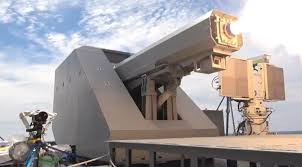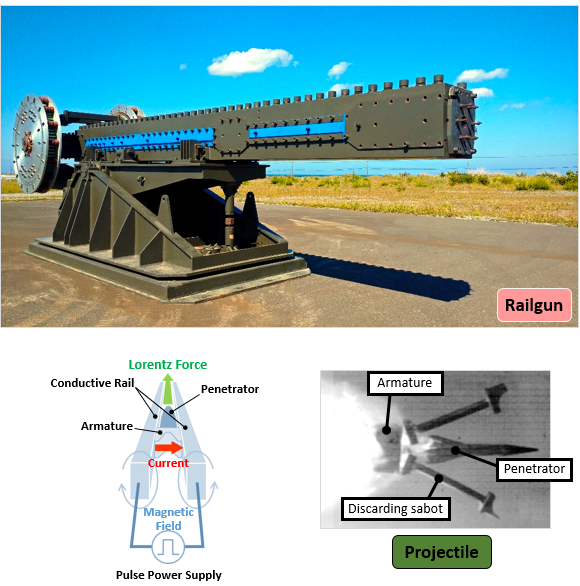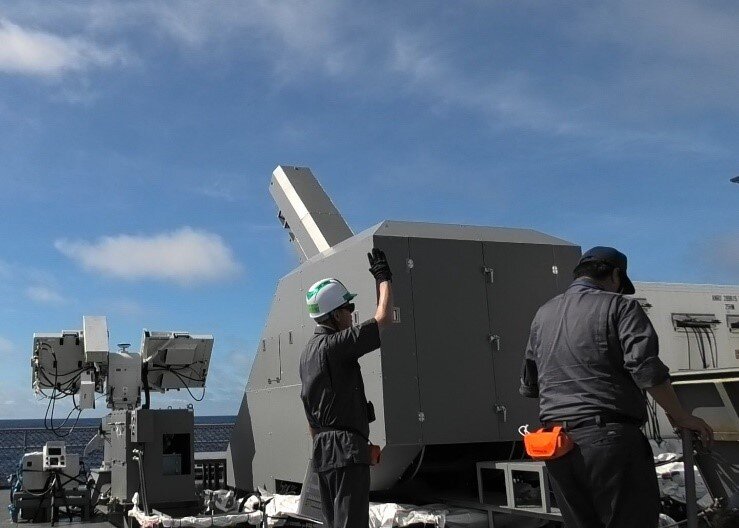
レールガン:標的船への射撃結果を開示!
・防衛装備庁 、技術シンポジューム開催
・宇宙での輸送手段に、活用の可能性!
Yahooジャパン掲載記事から速報をお届けします。

防衛装備庁:技術シンポジウム2025:
防衛装備庁技術シンポジウム2025が11月11日に開催された。
「電磁加速システム(レールガン)」の洋上射撃試験の概要と、その成果を発表した。
1.レールガン試験を、2025年6月から7月にかけ、海上自衛隊の試験艦「あすか」で実施。
2.標的船への貫通状況や、発射後の弾道特性など、実運用に近い環境でのデータを取得。

電磁加速システム(レールガン)とは:
レールガンは電気エネルギーを利用して弾丸を加速・発射する新しいタイプの火砲だ。
砲身内の2本の「レール」に大電流を流し、弾丸とレールに電流を流す。
1.磁界と電流の相互作用(ローレンツ力)が発生し、弾丸を高速に加速。
2.従来の火薬式砲と比べ、弾丸速度や運搬しうる弾頭量を、大幅に増やせる。

日本の電磁加速システムの性能:
弾丸初速が2300m/s以上、砲身寿命が200発以上の運用実績を得た。
現在、連射機構や砲外での安定飛翔、実戦配備時の射撃管制など、運用に必要な技術要素を確立中。
洋上射撃試験の目的と実施体制
海上自衛隊の試験艦「あすか」で実施した。
今回の洋上射撃試験は、「レールガンの早期装備化を見据えた実証試験」だ。
主な目的は次の通り。
1.標的船に対する被弾状況の確認
2.レールガンの弾道特性の把握
3.船舶搭載時に生じる課題の抽出
試験にあたり、陸上で試作したレールガンを洋上用に改修した。
4.砲身や本体は、雨水・海水の飛沫から保護するためシェルで覆う。
5.電源部は、艦艇搭載に耐えうる補強を施した。
その上で、海自試験艦「あすか」の後部甲板に搭載して実施した。

実施した試験種類:撮影・計測体制
洋上では、以下の2種類の射撃試験を実施した。
標的船への命中試験:
「レールガンの弾丸が、安定して飛翔する様子」を確認した。
1.曳航された標的船を目標に射撃を行い、被弾状況を船内設置カメラや評価板で確認した。
2.あすか上では、ハイスピードカメラ、ビデオカメラ、さらに上空ドローンで撮影を実施。

弾道特性取得試験:
八丈島南東方の海域で、アスカに搭載したハイスピードカメラと弾道レーダーで、飛翔姿勢や軌跡データを収集した。
3.レールガンの発射直後から着水直前まで、全ての過渡弾道データを取得。
4.レールガンを、射角0度と45度の2条件で、射撃を実施。

試験結果は以下のとおり:
野島崎南方沖と八丈島南東方の各海域で、合計約1週間ずつ、2回に分けて試験を実施。
標的船への貫通確認:
標的船内のカメラ映像などから、弾丸が船体に貫入した痕跡を確認。
1.貫入痕は、弾芯を後方から見た形状とほぼ一致している。
2.弾丸が、「船体に対してほぼ直線状に入射していること」が判明した。

飛翔の安定性:
あすか上のハイスピードカメラ映像から、「弾丸は陸上試験と同様に安定して飛翔すること」を確認した。
弾道データ取得:
1.射角0度・45度の両条件で、発射直後からの分離・姿勢変化・軌跡に関する実測データを取得。
2.特に45度射角での分離過程など、詳細な過渡現象が観測されました。

今後の展望:開発計画
月面基地のマスドライバー:
レールガン技術は、将来の宇宙開発で「マスドライバー」として。
1.有望だ物資を電磁的に加速して射出する新しい輸送手段になり得ることも考えられます。
2.特に月や火星のように重力が小さい環境では無人貨物の輸送に有効と言えるでしょう。
ただし、人間が搭乗するには加速度が極めて大きく、用途は無人輸送に限定される可能性が高い。
防衛装備庁の課題:
1.長い加速路の確保、空気抵抗や熱・摩耗対策、着弾地点での回収など、技術的・環境的課題がある。
2.連射化・小型高容量電源の実現、実戦配備時のプラットフォーム適合性の検証など、解決に取り組む。
https://news.yahoo.co.jp/expert/articles/adc66625511e7234c70000c497f173b5df6ada8d